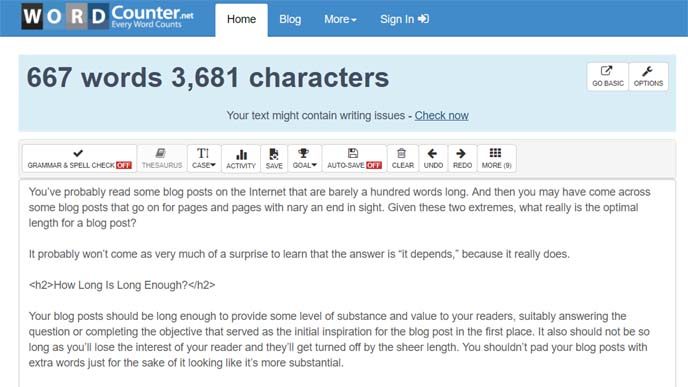You’ve probably read some blog posts on the Internet that are barely a hundred words long. And then you may have come across some blog posts that go on for pages and pages with nary an end in sight. Given these two extremes, what really is the optimal length for a blog post?
It probably won’t come as very much of a surprise to learn that the answer is “it depends,†because it really does.
How Long Is Long Enough?
Your blog posts should be long enough to provide some level of substance and value to your readers, suitably answering the question or completing the objective that served as the initial inspiration for the blog post in the first place. It also should not be so long as you’ll lose the interest of your reader and they’ll get turned off by the sheer length. You shouldn’t pad your blog posts with extra words just for the sake of it looking like it’s more substantial.
And really, it’s the context that matters here. If you take a look at most of the meme-driven blog posts on sites like Upworthy and Buzzfeed, you’ll find that they typically don’t have very many words at all. There’s maybe a sentence or two to accompany each image on the list and that’s it. Does this mean that the blog post is too short? No, not necessarily, because it accomplishes what the post was set out to accomplish.

Conversely, you may come across some really extensive product reviews that go into amazing technical detail. There are some digital camera reviews that go really in depth, taking a look at just about every aspect of that camera under nearly every circumstance, running through a whole battery of standardized tests and procedures.
But camera enthusiasts are a different breed and maybe they really do want to go that far before they decide to invest thousands of dollars into a new camera. That makes sense; it’s just important that posts of that length are suitably broken up into sections and pages. Again, this is so people can skim ahead to the sections that interest them. You want to provide the most positive reader experience possible.
The Goldilocks Approach
If you are looking for some general guidelines for length, though, here are a few basic ideas to keep in mind.
If your blog post is mostly text, it really needs to be at least 200 or 300 words to provide any sort of value to a reader. That’s going to be on the short side, but if you get the point across, you might spark a good conversation in the comments section. It’s also more acceptable if you maintain a higher level of frequency. For sites with multiple posts every day, the shorter length may be perfectly suitable.
Realistically, the majority of good blog posts are probably closer to the 500 to 1000 word kind of range. Most of what I write is around this kind of length.

More substantial posts can also do very well and these can go into several thousand words. That’s because there really is that much material to cover and every word is necessary. This can be real hallmark material that’s utterly great and could put you on the map. Good research with a great layout and plan can go a long way.
But these are just guidelines. Let common sense be your guide. If you find that you’re having a hard time coming up with at least 300 words or so, it might mean that your topic could use a little fleshing out or that it could be far too narrow of a scope. If you find that your blog posts end up being long rambling pieces that don’t go anywhere, maybe you need to place more structure in your posts or your need to break up the content into multiple posts.
Learn from experience and let traffic be your guide. Every audience, every website, every post is different.
